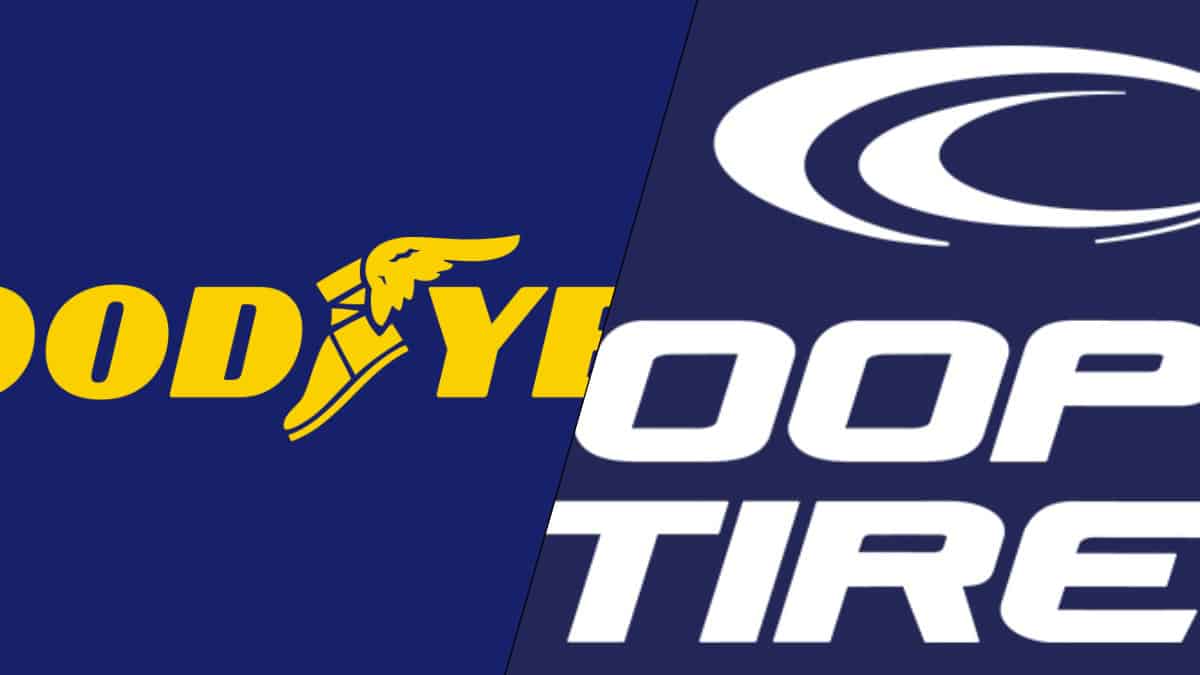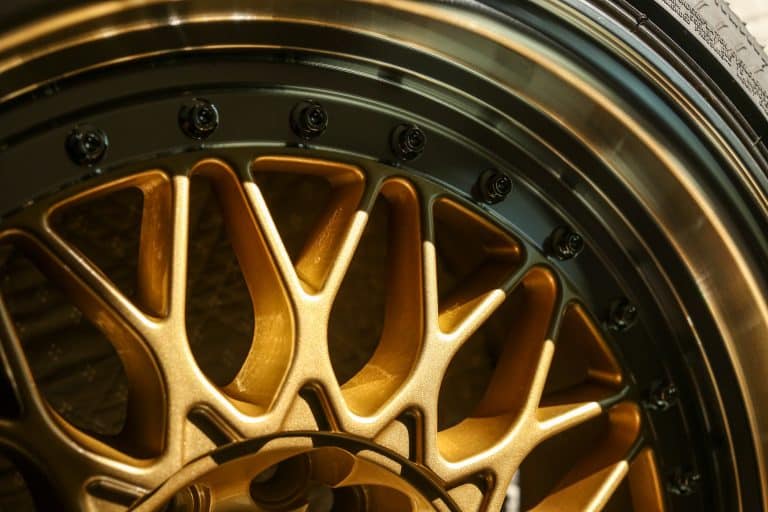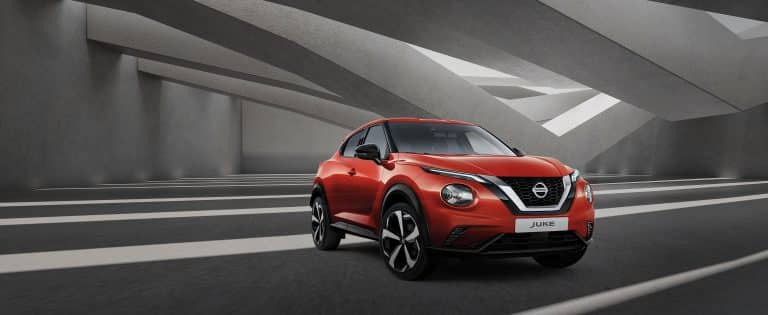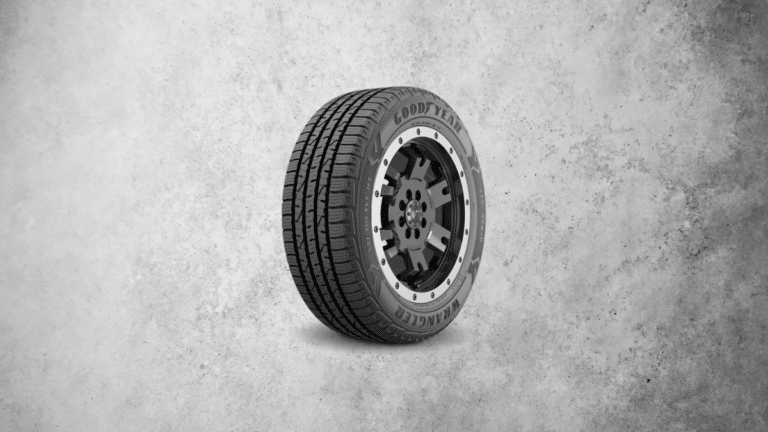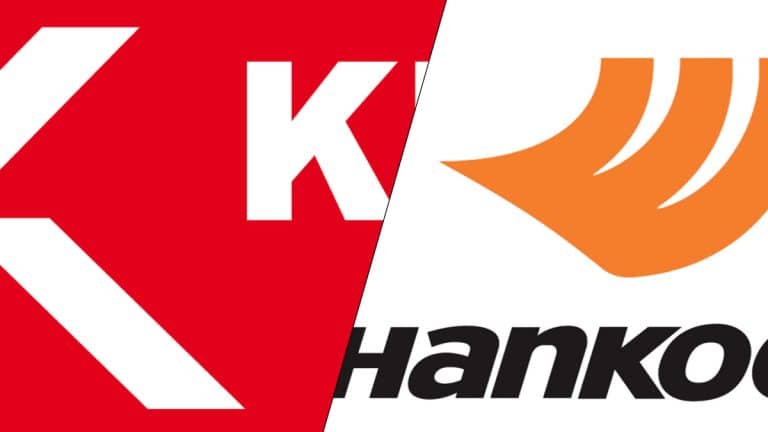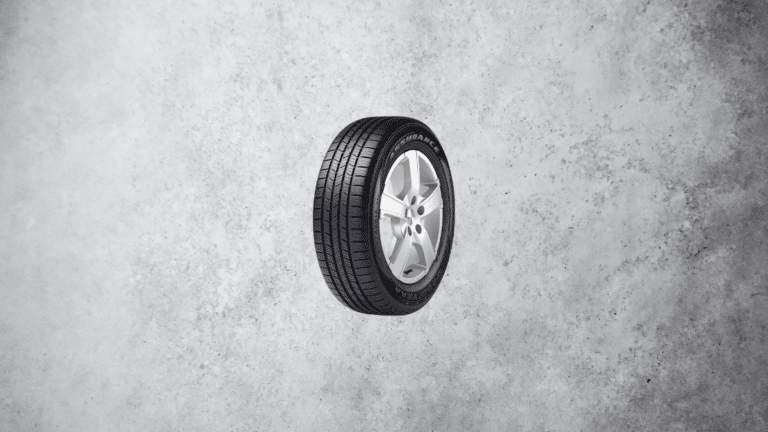Cooper Tires vs Goodyear
One of the most important parts of deciding which tires to buy is researching which ones are the best for you. Considering the number of available models, the choice isn’t too easy unless you already have your mind made up for a specific one.
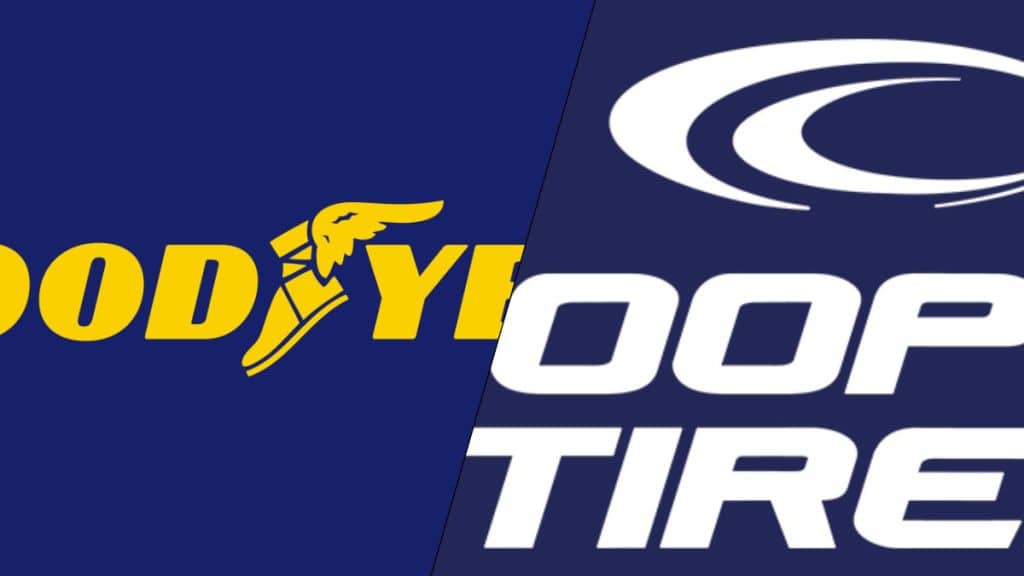
Cooper Rating: 4.5/5
Goodyear Rating: 4.7/5
For most people, the first step is to choose which brand to go for. Some make the best tires possible, the premium brands, while others, like the mid-range ones, offer an excellent balance between performance and price. Some people believe that paying extra isn’t always worth it, and I’d say they are right, but not in every situation. There are many debates and duels between brands, and today’s comparison will include two from different price ranges.
One of the manufacturers is Cooper, a popular mid-range option for people looking for a better price per performance ratio. On the other hand, Goodyear is a popular premium brand known as a manufacturer that makes some of the best tires. The most interesting thing about this comparison will be the fact that Goodyear owns Cooper, so it would be interesting to see how the subsidiary and parent company compare.
Cooper’s history
Cooper’s roots date back to 1914 in Akron, Ohio, as a company that worked with producing patches, repair kits, and cement for tires. In those days, the company was called M and M Manufacturing Company and has nothing to do with the M&M candies. The company owners later purchased Giant Tire & Rubber Company while moving the company to Findlay. Cooper as a company was founded in 1919, but at that time, it was an auto parts dealer, and once it merged with M and M Manufacturing, the company began producing tires, later changing its name to Cooper Tire & Rubber Company.
Despite being a slightly younger company than the rest of the pack, Cooper has positioned itself on the market as a reputable brand. Excellent performance, competitive prices from a company that aims to deliver more of what car owners want. Thanks to this approach, the company’s success has been on a constant rise, so it has purchased additional subsidiaries like Avon, Mastercraft, Mickey Thompson, and a few others.
At first glance, Cooper seems like a company that doesn’t have a lot to show for, but that’s far from the truth. Thanks to continuous research and development, the manufacturer has been able to keep up with the premium manufacturers, making what it does best – excellent tires.
As far as racing pedigree goes, Cooper wasn’t too interested in that in the earlier years. Yes, Avon was a supplier in Formula 1, but the results weren’t particularly good, and this was in an era before Cooper purchased in. In recent years, the manufacturer began to show interest in motorsports, and today we can see it making tires for popular racing series like Indy Light, Rallycross, and Ima Prototypes Lites.
Cooper’s tire families
When it comes to tire families, Cooper has a standard approach, and the tires are more or less categorized based on their features and use cases. As a result, most of them can be found for a broader range of vehicle types.
Endeavor
One of the most common tires that people look at in Cooper’s lineup are the ones from the Endeavor family. The reason for their popularity is that they are touring tires designed for long life, comfort, and some decent-ish performance. While they aren’t set up for maximum grip and traction, they are still far from being the worst in this area.
There are 3 available models, the regular Endeavor, Tour, and Plus, all of which are all-season options. The regular and Tour models come in sizes available mainly for passenger cars, while the Plus models are sized for CUVs and SUVs.
CS
The naming may seem weird, but this is another family that covers the touring segment of the market. These are the set of tires that came before the Endeavor, so you should expect a tire with similar properties emphasizing refinement and longevity.
In this family of tires, you have more options, but as a whole, things are very similar. With models like the CS1, CS2, CS3, CS4, CS5 Grand Touring, CS5 Ultra Touring, and CS7, Cooper covers a wide range of vehicle applications ranging from compact hatchbacks to SUVs. As far as weather conditions go, all tires are all-season ones.
Zeon
Moving away from the comfortable tires, we reach the performance ones that fall under the Zeon umbrella. These models are designed for maximum grip and traction at the expense of refinement, and you shouldn’t expect them to last as long as the touring options.
Things are a bit mixed up in this family. On the one hand, you have models like the RS3-S, RS3-A, or RS3-G1, which cover the passenger side of the market. For the CUV and SUV owners, Cooper offers the LTZ, which, even though it’s an all-season performance tire, it’s also an all-terrain one, so technically, it can do some off-roading. In this family of tires, you can find summer and all-season models.
WM
Cooper isn’t too keen on long naming schemes, so here’s another family with two lettered names. The WM group of tires are designed as performance tires for winter conditions, so you won’t have tons of models to choose from. Also, these are tires that can be fitted to passenger cars only.
At the moment, the only model available is the SA2+, but it comes in two different varieties. One is a T-rated model, while the other one can be purchased as an H or V-rated tire, depending on the size. Another key difference is the tread pattern, meaning that you may get a slightly different performance. There is also a Van model, which despite the name, may get fitted to an SUV or a light truck, and it is also a studdable tire.
WeatherMaster
Continuing the trend of winter tires and covering a cap that the previous family had, Cooper also offers the WeatherMaster tires. Like the previous ones, these are winter tires, but unlike the WM models, these are designed for larger vehicles like SUVs or light trucks.
The available options are limited but still cover a wide range. You have the standard WSC and the WSC 4×4, which is pretty self-explanatory. The regular model is designed for CUVs and SUVs, while the 4×4 one is for light trucks or some larger SUVs. Another key difference is that these tires can be fitted with studs.
Discoverer
The Discoverer family of tires is the widest one so far, and looking at the available options, Cooper tried to cover the entire tire industry, and it succeeded. With tons of models available, you can find performance, touring, winter, all-terrain, and mud-terrain tires, and naturally, for a wide range of vehicle applications.
With the All-Season and Winter, Cooper covers most of the passenger cars for those respectable weather conditions. For the larger vehicles, you have models like the AT3 LT and XLT, ATT, or AT3 Sport, which cover the SUV segment with all-terrain tires. For maximum off-road performance, you have models like the S/T MAXX or STT PRO.
Evolution
When you compare the Discoverer family with the Evolution one, you’ll find that there aren’t tons of differences. In this group of tires, you also have an extensive range of weather and vehicle applications, so things aren’t too different apart from a few models.
As part of the Evolution family, you have models like Tour or Winter, which come in sizes for passenger cars, CUVs, SUVs, and minivans. There are also models for larger SUVs and light trucks, and they can be H/T, which is a highway tire, or M/T, which is a mud-terrain one.
Cobra Radial G/T
This and the next entry will include a single tire because they don’t fall in any specific family, but both are important and must be mentioned.
Cooper is one of the rare manufacturers with a separate tire model for muscle cars, which is no surprise since it’s a US-based company. The Cobra Radial G/T is an all-season option for people who drive these cars, want to keep an authentic look, and want a tire with the latest and greatest technologies.
Trendsetter SE
Finally, the last model for this list is the Trendsetter SE. This is Cooper’s answer for people that drive older cars and struggle to find a tire with normal, at least by their accounts, size. Having an older car doesn’t mean that you have to fit the cheapest and worst tire you can find. With this model, you can have a well-performing tire at an affordable price and with a size that you won’t have to worry about fitments.
Goodyear’s History
I’ve covered Goodyear as a brand quite a lot here, but since we’re comparing both, here’s a quick history lesson. Like Cooper, Goodyear was a company founded in Akron, Ohio, in 1898, making it among the oldest manufacturers in the world and the first US-based one. Frank Seiberling, the owner of the company, decided to name it after the inventor of vulcanized rubber, Charles Goodyear.
The name didn’t mean much, as in the early days, the company was working with bicycle tires, and even though they weren’t terrible, it wasn’t something that helped it grow. Luckily, Henry Ford needed tires for the cars he began making, so naturally, he went to Goodyear for help which was the tipping point where the company’s popularity began to grow.
Goodyear’s growth meant that the company was producing more tires and making more money, resulting in a bigger budget for research and development. Thanks to that, the company is known to be the first one to begin producing radial tires which brought a lot of improvement over the outdated bias-ply ones.
The innovations didn’t stop there. Goodyear continued to bring new technologies to the table, including ActiveBraking, EfficientGrip, and ActiveCornerGrip – something you’d find on its performance-oriented tires. You also have WearComfort, SmartWear, and SoundComfort, technologies used to make the touring tires longer-lasting and better refined.
Racing is an area where Goodyear isn’t a stranger to. Since it’s been involved in multiple racing series, including Formula 1, where it still holds the record for the most wins, the company can utilize some of those technologies and apply them to its road tires.
In mid-2021, Goodyear finalized the agreement and purchased Cooper, so technically we wouldn’t be seeing Cooper tires with Goodyear technologies until the company decides to throw out new models.
Goodyear’s tire families
Unlike Cooper, with Goodyear’s families, you are looking at a more traditional approach to grouping tires.
Assurance
Like with the previous brand, the list starts with one of the most popular options. The Assurance family of tires consists of touring models designed with refinement and longevity in mind, so they are the most popular ones. A bonus with these tires is that Goodyear tried to retain some of the performance that these kinds of tires usually lose.
Goodyear has several models in this family, and you’d be choosing one based on the main feature each offers. You have WeatherReady, Fuel Max, CS Fuel Max, ComfortDrive, and Finesse, which come with a slightly different set of features. The name determines the main one each tire can offer, and as far as applications go, all models are all-season ones designed for passenger cars.
Eagle
If you’re one of the lucky people on this planet who owns a sportier car, you’d probably look at the Eagle family of tires. When compared with the previous family, there are designed for improved performance, meaning you’ll get better grip and traction at the slight expense of comfort,
Goodyear offers the Eagle tires in an extensive range, so there’s a model for everyone. There are main models which additionally brand out into several sub-models, which is why it’s a flexible family. You have Touring, Sport, NCT, RS, F1, Exhilarate, and GT, which cover a broader use case with plenty of sizes that would fit multiple car sizes.
Ultra Grip
Until this point, most models were either summer or all-season, with a few winter ones, and this family covers the gap. The Ultra Grip family of tires offers models designed for driving in winter in conditions where the all-season ones would struggle.
The Ultra Grip tires come in several varieties – Winter, Ice WRT, 8 Performance, GW2, and GW3, and thanks to these, Goodyear ensures that these tires can be fitted on a wide range of vehicles. As far as performance goes, each model serves a different purpose, and while one is better on ice, another can be a bit more performance-oriented.
WinterCommand
What if you want something for better performance on ice that isn’t available with the Ultra Grip? Then you look at WinterCommand, a family of winter tires which are designed to cover a similar aspect of the market as the previous one. The key difference here is that these models can be fitted with studs, providing maximum traction on ice.
There aren’t tons of models available in this family, but to be fair, it does come in a very wide range of sizes. As a result, it can be installed on a wide range of vehicles, which most people one. A slight downside for some is the fact that not all sizes can be fitted with studs, so if you need them, make sure the size fits.
Wrangler
Some brands have managed to position themselves as the best on the market with some family of tires, and in this case, we have Goodyear with the Wrangler family. Designed for CUVs, SUVs, and light trucks, these are the set of tires you’d want if you plan on going off-roading.
This is the widest family, which comes in over 20 models, each with a slightly unique set of features and size options. It means that you have multiple options for all-terrain tires, which strike a nice balance between on and off-road performance. On the other hand, there are the mud-terrain ones, for the most extreme driving conditions. Finally, there are also highway tires, which are touring tires for larger vehicles.
EfficientGrip
This next family of tires is designed to be positioned between the Assurance and Eagle. EfficientGrip is a family of decently well-refined tires and can offer a decent level of performance. I mentioned decently in both cases, as tires that are designed for this kind of balance won’t be able to compete with the dedicated one.
As far as options go, Goodyear doesn’t offer too many. The EfficientGrip tires come in a regular and a Performance model, with the second one offering a bit more grip and traction. Despite being only two tire options, there are plenty of sizes, meaning fitting them to any passenger car shouldn’t be a problem.
Excellence
It’s no secret that Goodyear has some overlaps between its families, and Excellence is one of those. The features of these tires are very similar to the EfficientGrip ones – higher levels of grip and traction than touring tires while retaining some of the refinement.
The available options are decent, and you get several models, which, even though it isn’t as much as some of the other families, it’s not an overly limiting option. The best part is that these tires can even be fitted to some older cars, as they are available in smaller-sized tires. On the other side of the spectrum, there are larger options, so overall you shouldn’t have any fitment issues.
Fierce
Another family of tires that cover the larger vehicle segment is the Fierce. What the Wrangler offers with a few models, this family covers an entire group of tires.
The main difference between the Fierce and Wrangler is the applications. While both are designed for larger vehicles like SUVs or light trucks, unlike the Wrangler lineup, these tires are primarily all-terrain ones. As a result, you’re looking at a tire with a nice balance in terms of driving conditions with the ability to be used in the winter as well.
Frontera
Similar to the previous family, the Frontera one covers a portion of the Wrangler tires, so it’s aimed at people with SUVs, light trucks, and some CUVs. Despite the type of vehicles these will be fitted, they are not tires that can be taken off-road.
The Frontera comes in two variants, the SL and HL, both of which are touring tires. The difference between them is that the HL is more comfort-oriented, while SL can offer a sporty edge. Another similarity is that they are all-season models, so usability in light snow conditions is possible.
Integrity
As a premium manufacturer, Goodyear isn’t the most affordable option you can find on the market. To remedy that, the manufacturer has another family of tires, which are sold at a slightly lower price. As a result, these tires won’t be able to match the performance of the best this manufacturer has to offer, so it boils down to the balance of price per performance.
With that said, an important thing to note is that Integrity comes as only one model and is designed for passenger cars. The tire is aimed mainly at people who drive older cars, where paying a premium price isn’t always worth it.
Differences between Cooper and Goodyear
Considering that Cooper is a mid-range manufacturer, you shouldn’t expect its tires to be on the same level as Goodyear’s. With that said, there are some exceptions, and I’ll outline them here.
Performance
I have to give credit to Cooper for making excellent tires, and even though they wouldn’t manage to outperform Goodyear’s options entirely, they can come very close. In some cases, you may see better results from the cheaper brand.
Let’s compare the Zeon RS3 and the Eagle Exhilarate, both of which are excellent all-season UHP tires. In terms of braking in dry and wet conditions, the Cooper tire surprisingly outperforms the Goodyear one. With that said, the Eagle tire is a better option for handling in both conditions, and it does better in snow.
Looking at the winter options and comparing the WeatherMaster Ice 100 with the Ultra Grip Ice 2, things are as you’d expect. The Goodyear model delivers better performance than Cooper’s tire, which shouldn’t come as a surprise. I have to praise Cooper for managing to make a tire that’s very close to the premium competition, so it’s no wonder that people often lean towards it.
In the off-road segment, the Discoverer AT3 is another example of a mid-range tire outperforming a premium one in certain conditions. On the road, Cooper’s tire can deliver slightly better results in terms of traction, handling, and braking. For off-roading, the Wrangler AT Adventure is a tire that’s in a different league and outperforms the Discoverer AT3 without a problem.
Let’s be honest, you won’t find a tire from Cooper that can outperform a Goodyear one in every single situation. Despite that, the company deserves to be praised for remaining competitive and delivering tires that are almost as good.
Available Options
At first glance, you may think that Cooper is at a disadvantage here, but it’s not as simple as that. While the company doesn’t have as many tire families as Goodyear, there are still many options.
While Goodyear usually groups tires based on use cases, Cooper groups multiple of those into one family, like the Discoverer or Evolution. While this is true, Goodyear still offers a bit more, and I’d have to say in not the best way. So, while you have a grand touring option from Cooper designed for refinement, low rolling resistance, and longevity, Goodyear offers several models with similar features and different main characteristics. This means that you have the ComfortDrive, a tire designed to be as comfortable as possible. I’m not saying that the other aspects of it are terrible, but you’re in a weird situation where you have to choose between a tire that’s more comfortable or better for fuel economy.
Cooper doesn’t do that and gives you the whole package. Naturally, the tire won’t be as good, but at least you won’t be struggling to choose the right one.
When it comes to performance-oriented tires, Goodyear is in the lead as it has more options than Cooper. Regardless of the performance differences, with the premium brand, you have more performance tires to choose from with a different set of features.
For winter driving, I’d say things are more or less even. Both brands offer a wide range of tires, both studless and studdable, so I’d call this a tie.
Goodyear is known for its off-road capable tires and is the better option than Cooper when comparing the available models in this category. The Wrangler lineup alone has more all-terrain and mud-terrain options than the entire Cooper lineup, so it’s clear who is the winner.
Cooper seems to do a bit better with older tires and muscle car ones. Having a dedicated tire for both of these puts it a bit ahead of Goodyear. Even though it has an affordable family, people like me aren’t the main target group, so there aren’t too many options for us in the premium corner.
Price
The main selling point of Cooper is that it’s a cheaper option than the premium manufacturers, so you can probably guess which one is the winner in this category. While for some cases that is true, there are some surprising exceptions.
A CS5 Ultra Touring in a 15-in variant is around $20 cheaper than the Assurance WeatherReady, so things are as you’d expect. Naturally, there are some exceptions, like the Discoverer True North and the Ultra Grip Ice WRT, where the roles are changed, and the Cooper tire is a tad more expensive.
The prices are similar for the smaller options in the off-road world, so the Discoverer S/T Maxx and the Wrangler MT/R with Kevlar are a few dollars off. Going for the larger options, like a 20-inch one, things remain the same, and you may even end up in a situation where the Cooper tire will be a bit more expensive.
Generally speaking, Cooper is the more affordable brand, but when you’re out shopping, compare the price with its Goodyear rivals. In some cases, you may find that the differences aren’t as massive.
Warranty
Things are a bit of a mixed bag in this category, and in some cases, the mid-range manufacturer is the better option.
One of the comparisons where Cooper is up front is in the all-season performance tires. Technically, the Cobra Radial G/T falls in this category and comes with a 50,000-mile treadwear warranty. On the other hand, the Eagle GT II doesn’t have any.
On the other hand, you have the Assurance MaxLife, which has an 85,000mile treadwear warranty. It means that you’re getting 5,000 miles longer warranty when compared with the CS5 Grand Touring.
Advantages of Cooper
- Slightly more affordable in some cases
- Performance levels aren’t too far off from Goodyear
- Some models have a longer treadwear warranty
Advantages of Goodyear
- Premium performance and slightly better overall package
- A better option for off-road capable tires
- More options to choose from in some categories
Which brand to choose?
The easiest thing for me to do is recommend Goodyear and be done for today. Unfortunately, things aren’t as straightforward as that, so there are situations where either company is a good option.
For starters, if you’re looking for a more affordable tire and Cooper’s options are cheaper, then go for it. While it won’t perform on the same level as a Goodyear tire, it’s pretty close. On the other hand, people with older cars may struggle to find the right size with the premium manufacturer, so the mid-range one will be better.
With that said, if you’re an SUV or light truck owner and want the best off-road performance, then Goodyear is the one to go for. The Wrangler family of tires is the most popular one, and with good reason. Considering the performance it offers, you’d have a piece of mind getting some of those tires. The Cooper models aren’t bad in this regard, but they do fall behind.
To be honest, choosing one is more complex than you think. Cooper has some excellent options, and as long as they are cheaper or at a discount, you won’t make a mistake going for them. On the other hand, if the price is similar or you find a Goodyear model at a discount, then go for the premium tire.
My recommendation is to pick two models and compare them. Search through our database of reviews and see which one will be a better fit for your needs.
